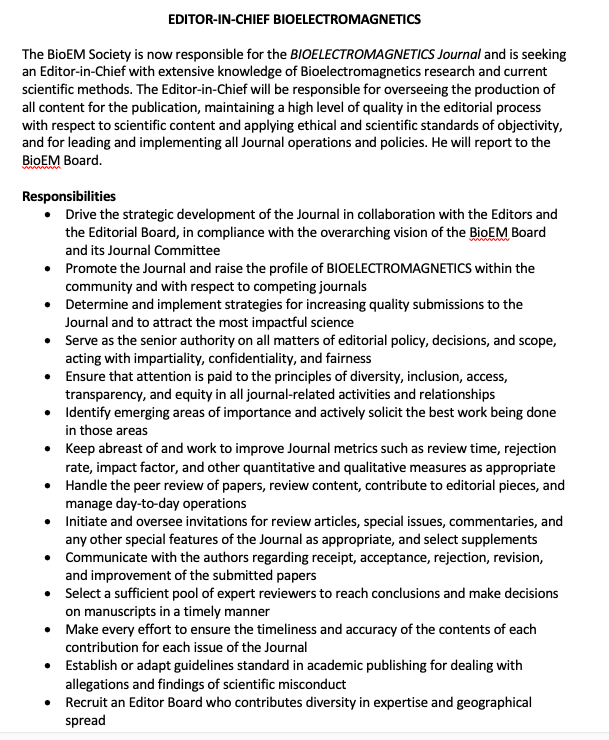The End of BEMS
A Merger or a Heist?
U.S. & European Research Societies Set
To Join and Become BioEM
The Bioelectromagnetics Society (BEMS) and the European BioElectromagnetics Association (EBEA), the two leading research groups in Western countries, will soon join together and become BioEM. Like its predecessors, the new society will be a forum on the interactions of all types of non-ionizing electromagnetic fields and radiation with living organisms. BioEM will be based in Zurich, Switzerland.
The move is hardly unexpected. Just the opposite. A union has been in the planning stages since at least 2016. Many favored a BEMS-EBEA consolidation even earlier, but it ran into one roadblock or another, at least partly because directors did not want to lose control.
“It is the only sensible approach,” says Kenneth Foster, a professor emeritus of bioengineering at the University of Pennsylvania in Philadelphia. “Bioelectromagnetics is a niche field that cannot support two strong societies.” No one contacted for this story disagreed.
But one hurdle remains. James Lin, one of the Society’s most prominent members and the editor-in-chief1 of its journal, Bioelectromagnetics, is raising objections over what he sees as a flawed and confusing process followed by BEMS to bring the two societies together.
Lin, a professor emeritus at the University of Illinois Chicago, has a seat on the BEMS board of directors. He is a former president of the Society (1994-1995) and a 12-year veteran of ICNIRP (2004-2016).
“I am not against the merger,” Lin told Microwave News, “I just want it done properly.” He maintains that the vote by the BEMS membership did not comply with the society’s bylaws. “It was a power grab by EBEA,” he said, “They railroaded it through.”
The final vote on the merger was held at the BEMS-EBEA annual meeting in Ghent, Belgium, in late September. Lin wants it repeated.
Money in the Bank and a Steady Stream of Income
Lin says that EBEA has long eyed BEMS’ substantial savings and reliable income. BEMS has approximately $750,000 in the bank and the journal, which Lin has edited since 2006, brings in as much as $100,000 a year. In contrast, EBEA has only about $150,000 in savings with negligible income. In 2020, it netted just $200.
The financial benefits to EBEA were not brought to the attention of the BEMS voters, according to Lin. “Very few people in Ghent were aware of what was at stake,” he said.
None of the documents related to the merger, public or otherwise, reviewed by Microwave News, mention the million-dollar dowry that BEMS would bring to a union with EBEA.
“There is no question in my mind that the BEMS money is the most influential factor in this whole process,” Lin said.
Marthinus van Wyk, the current president of BEMS, did not respond to a request for comment about the merger. But his position is clear. In a November 9 message to the other members of his board, he stated that it is time to move on —there is no need for another ballot. The focus should now be on the “dissolution of BEMS and creation of our new society, BioEM, with EBEA,” van Wyk wrote.
Lin, however, shows no sign of backing down. To support his case, Lin cites a written opinion by BEMS’ lawyer, Julian Spirer of Bethesda, MD, in which he acknowledges that the vote on the merger could be seen as “at least arguably defective.” In the end, however, Spirer puts this concern aside and concludes that the vote for dissolution was “properly conducted.”
The stalemate continues.
[I am sparing the reader the details of the dispute —they involve definitions of majorities, necessary quorums, BEMS bylaws, government rules and more. But I would remark that, having waded through them myself, there are enough uncertainties to support Lin’s case for a redo. Indeed, a vote in 2018 on the more general question on whether to pursue a merger was put to a second ballot when the process was called into question. Why the rush now? Lin asks. A new vote would allow a fuller airing of what should happen to the BEMS money.]
[As this story is being prepared for posting, Microwave News has learned that Spirer is resigning as BEMS’ legal advisor. No word as to why.]
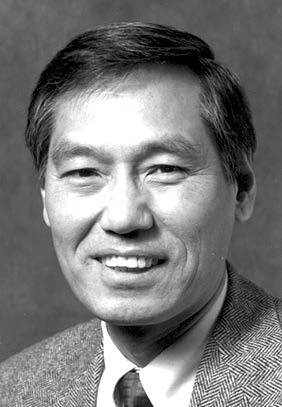
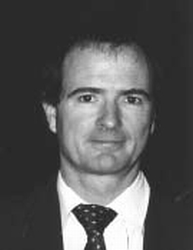
James Lin René de Sèze
René de Sèze Gets the Credit
René de Sèze, who stepped down as the BEMS president a month ago after a two-year run, is credited with getting the merger done —or at least nearly so. De Sèze is with France’s National Institute for Industrial Environment and Risks (INERIS), not far from Paris.
Van Wyk took over as BEMS president in October. He acknowledges “René’s “huge contribution…throughout this long process.” An engineer, van Wyk is a director of Alphawave, a technology investment group based outside Cape Town, South Africa.
De Sèze also says that he is against a new vote.
To add a touch of intrigue to the affair, de Sèze is much more closely identified with EBEA than with BEMS. He was first elected to the EBEA Council, its board of directors, in 1996. He later served a five-year term as the secretary-treasurer and, in November 2003, he was elected president of EBEA. He stayed in office until 2008.
Requests for comment addressed to members of the BEMS board of directors by Microwave News were left mostly unanswered. They declined to respond to even the most basic questions about the state of the Society.
“Nothing Fishy”
“There is nothing fishy going on,” Niels Kuster, told me in an extended telephone interview. Kuster is the director of the IT’IS Foundation in Zurich and has been EBEA treasurer since 2013. “The money was never a consideration,” he said. Kuster was president of BEMS in 2008-2009.
“There’s no difference if the money is in Europe or in America,” contends Kuster. That may not be so clear. BEMS is an American tax-exempt organization, and wiring its assets to Europe might incur U.S. taxes and violate the BEMS bylaws.
All this could be avoided, Spirer told the board, by setting up a new non-profit in the U.S. That is, instead of BEMS money going to Europe, EBEA’s money would come to America.
At least one member of the BEMS board is sensitive about sending the BEMS money abroad. “We may also be sued by the U.S. authorities regarding the transfer of the funds,” Satoshi Nakasono warned the other members of the board as recently as last month, after the vote in Ghent. Nakasono is with the Central Research Institute of Electric Power Industry (CRIEPI) in Abiko, Japan (comparable to EPRI in the U.S.).
“It is cheaper and easier to operate in Switzerland,” Kuster said.
What Happens to the BEMS Money?
How much money does BEMS have in the bank? Bennett Ibey, its treasurer, declined to say. Ibey is a biomedical engineer at the Air Force Research Laboratory in San Antonio. He and Lin are the only Americans left on the BEMS board of directors.2
According to the Society’s 2019 tax return, the most recent available, BEMS had assets of $667,163. (Tax filings of U.S. non-profits are open to the public.) Today, I have been told, those funds have grown to about $750,000.
Asked what will happen to the BEMS money, Kuster replied, “No one knows what to do with it.” When pressed, he suggested, “We could reduce registration fees for the annual meeting.”
Frank Barnes, a distinguished professor emeritus at the University of Colorado Boulder, and a former president of BEMS (2000-2001), favors supporting students to help them attend conferences. He would also like to see if there are ways that the society could help influence governments and foundations “to support research in critical areas.”
Lin floated the possibility of sponsoring projects by junior faculty to help remedy what he calls the “dismal state” of EMF research in the U.S. and Europe.
One wag suggested that, in the end, the BEMS money might end up paying for ritzy European dinner parties.
The newly appointed directors of BioEM (they call themselves the “Founders”3) have taken steps not to spend the money right away. At their first meeting on October 1, they adopted a resolution limiting total outlays to €10,000 (~$11,500) until after the merger and the election of a new board.
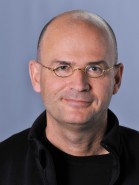
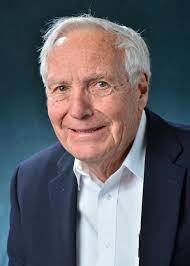
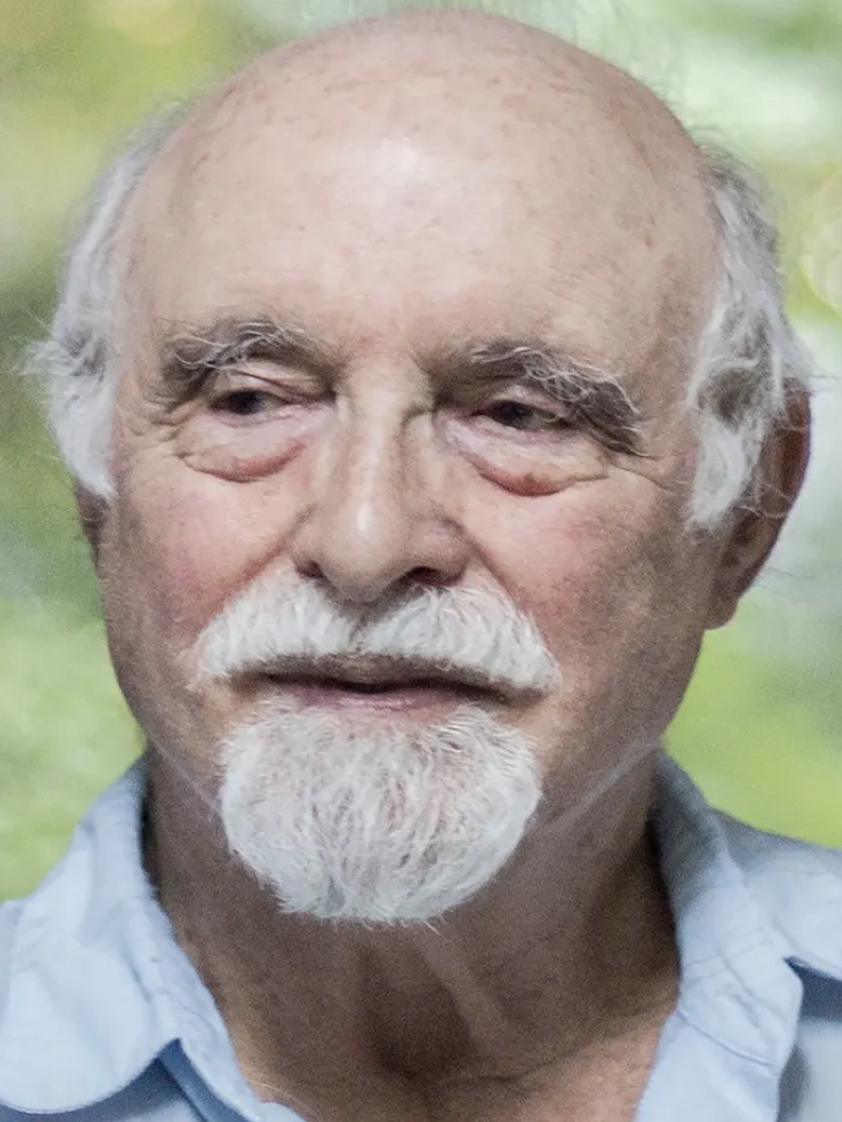
Niels Kuster, Frank Barnes and Allan Frey (left to right)
Future of EM Research Is in Asia
The number of BioEM members, at least initially, will be less than the sum of the current BEMS and EBEA memberships — some belong to both societies. The total will likely be less than 250.
Azadeh Peyman of Public Health England, the outgoing BEMS secretary, declined to discuss the extent of the overlap. De Sèze is the secretary-elect, the first time a former president has taken the job. He takes over next year, if the merger does not go through.
BioEM will be smaller than the Chinese Bioelectromagnetics Society, which has 286 members, according to Professor Tao Song, its president. Song is with the Beijing Key Laboratory of Bioelectromagnetism.
The membership of the Chinese BEMS, founded in Hangzhou in 1986, has been increasing slowly in recent years, Chuanfang Chen, its secretary, told me by email. He said that research funding has been growing over this period.
Chen is also a member of the Beijing Key Laboratory of Bioelectromagnetism. It has a staff of more than 40, of whom 14 work in Song’s research group.
“The future belongs to China, Japan and Korea,” Lin predicted.
Barnes agrees. “I think the work being done in Asia is going to become more and more important,” he said. “We need to get the people in China more involved.” But, according to Lin, the opposite is happening: the Chinese are dropping out of BEMS.
The ICNIRP Connection
There have always been strong ties between EBEA and ICNIRP, with substantial overlap between the EBEA’s Council and members of the Commission.
The current EBEA council4 includes Anke Huss and Martin Röösli, both ICNIRP commissioners. Other commissioners include three former EBEA presidents —Guglielmo d’Inzeo, Carmela Marino and Eric van Rongen— and one former council member, Gunnhild Oftedal.
There are many other links. Among ICNIRP’s Scientific Experts are the current president of EBEA, Micaela Liberti, as well as another former president, Isabelle Lagroye.
Military Origins of BEMS
BEMS is a creature of the U.S. military. The Office of Naval Research (ONR) was instrumental in setting up the Society in 1978. The objective was to help address growing public concern over the health effects of high-power communications and radar transmitters.
At the time, the Navy was struggling to find an acceptable site for a gigantic antenna, which, it claimed, could send messages to submarines travelling deep in the ocean. As originally proposed in 1968, Project Seafarer —later rebranded as Project Sanguine and then again as Project ELF— would have covered 25,000 square miles (an area four times the size of Connecticut), much of it in the fiercely independent north woods of Wisconsin.
Early studies pointed to possible public health problems. Some called it the “world’s largest electric chair.” The Navy’s pitch was that rigorous scientific research, fostered by the newly founded BEMS, would clear up the uncertainties. (It didn’t.)
ONR’s Tom Rozzell, one of the six original founders5 of BEMS, became the first editor of the society’s newsletter. Another Navy man, Elliot Postow of the Naval Medical R&D Command, was the first editor of its journal, Bioelectromagnetics, which is now led by Lin.
Later, the U.S. Air Force took the Navy’s place as the dominant military presence in BEMS. The USAF operates powerful early-warning radars (for instance, PAVE PAWS) and has developed RF/microwave weapons for crowd control — known as “active denial.”
In the 1990s as cell phones proliferated, Motorola became influential in the Society. Mays Swicord, the head of the company’s RF–biological research program, became the editor of the BEMS newsletter.
EBEA and BEMS: 1992 World Congress
EBEA was founded in 1989 by Jocelyne Leal, a member of José Delgado’s lab at the Ramón y Cajal Hospital in Madrid. She wanted to encourage the still nascent field of EM research in Europe. EBEA’s first conference, held in Brussels in January 1992, attracted 160 participants. By then, EBEA had 367 members from 35 countries.
BEMS and EBEA held their first joint meeting at Disney World in Orlando in 1992. The 1st World Congress, as it was called, had 733 registrants from 30 countries. At the time, BEMS had more than 750 members and its annual conferences were must-attend affairs.
That’s all in the past. Both BEMS and EBEA are now shadows of their former selves. BEMS has shrunk to about 160 members, and EBEA to about 100, as research funding declined over the last 20 years. At their last conference, in Ghent in September, there were 253 registrants, many participated remotely.
Yet even those numbers don’t tell the full story of how BEMS has withered away. Many of the current American members are old timers who are now retired. There are few young scientists in the wings ready to take their place.
“A Body of Misinformation”
Allan Frey, another of the six founders of BEMS and one of only two who are still with us, is not shedding any tears over the Society’s demise. Here’s what he told me:
“When I proposed the creation of BEMS to Tom [Rozzell] to get some seed money, it was to take the emf-bio area out of the control of the engineers and their meetings. Once BEMS started, they moved in to take control again and I left BEMS. Thus, I think its existence has not and does not matter.”
Asked why the U.S. Navy and USAF had lost interest in BEMS after being such powerful forces for so many years, Frey replied:
“There is no reason for them to have interest. The research in the U.S. has been dead for many years and all there is, is largely a body of misinformation.”
Luc Martens Elected First President of BioEM
February 8, 2022
The results of the first election for the board of directors of BioEM were announced today.
Luc Martens, a professor at Ghent University and the head of its Waves research group, is the president of the new society. Azadeh Peyman of Public Health England is the president-elect.
The other members of the board, in order of the number of votes received, are:
- Joseph Wout, Ghent University (a member of the Waves group), Belgium
- Richard Nutticelli, Pulse Biosciences, Hayward, CA, U.S.
- Anke Huss, University of Utrecht, The Netherlands
- Florence Poulletier de Gannes, University of Bordeaux, France
- Frank Prato, Lawson Health Research Institute, London, ON, Canada
A total of 122 votes were cast out of 158 eligible members.
Niels Kuster, the director of the IT’IS Foundation in Zurich, will continue as treasurer for two years.
Search for New Editor of Bioelectromagnetics Begins
April 1, 2022
Bioelectromagnetics, the BEMS/EBEA journal now “owned” by BioEM, has opened the search for a new editor-in-chief. The position is unpaid, but the Society will offer administrative expenses, subject to board approval.
The selected candidate, who will take over from James Lin, will serve for three years, a term which may be renewed every three years, according to a notice posted by Richard Nutticelli, a member of the new BioEM board and its journal committee.
Applications are due by April 15. The new editor is slated to begin on June 1.
The full job description and other details are here.
Theo Samaras, Greek Physicist, Appointed Editor
June 2, 2022
The board of directors of BioEM has selected Theodoros Samaras to be the new editor-in-chief of Bioelectromagnetics. Samaras is a professor in the department of applied and environmental physics at Aristotle University of Thessaloniki. He takes over from James Lin on July 1.
Samaras received his undergraduate and dootorate degrees in physics from Aristotle University. He went on to do a post-doc with Niels Kuster at ETH and the IT’IS Foundation in Zurich in 1998-1999. Samaras has continued to collaborate with Kuster’s group over the last 20 years, mainly on RF dosimetry and thermal effects.
____________________________
1. Lin has submitted his resignation as the editor-in-chief of Bioelectromagnetics. The BEMS board of directors asked him to remain until a new editor is named after the merger. Lin agreed.
2. The current members of the BEMS board of directors are: Yasir Alfadhl (U.K.); René de Sèze (secretary-elect, France); Bennett Ibey (treasurer, U.S.); James Lin (U.S.); Satoshi Nakasono (Japan); Azadeh Peyman (secretary, U.K.); Lucas Portelli (Switzerland); Tongning Wu (China); and Marthinus van Wyk (president, South Africa).
3. The members of the “Founding Board” of BioEM are: Bennett Ibey (U.S.); Niels Kuster (treasurer, Switzerland); Micaela Liberti (Italy, co-president); Lucas Portelli (Switzerland, secretary); Marthinus van Wyk (South Africa, co-president); and Olga Zeni (Italy).
The members of the BEMS–EBEA Merger Committee are: Philip Chadwick (U.K.); Guangdi Chen (China); Niels Kuster (Switzerland); Isabelle Lagroye (France); Alexandre Legros (Canada); Micaela Liberti (Italy); Luc Martens (Belgium); Richard Nuccitelli (U.S.); René de Sèze (France); and Marthinus van Wyk (South Africa).
4. The current members of the EBEA Council are: Anke Huss (The Netherlands); Wout Joseph (Belgium); Niels Kuster (treasurer, Switzerland); Isabelle Lagroye (France); Philippe Lévêque (France); Micaela Liberti (president, Italy); Luc Martens (past-president, Belgium); Caterina Merla (Italy); Florence Poulletier de Gannes (France); Martin Röösli (Switzerland); Antonio Sarolic (Croatia); Olga Zeni (Italy); and Maxim Zhadobov (France).
5. The founders of BEMS were: Ernest Albert (1937-1990); Carl Blackman (1941-); Allan Frey (1934-), Edward Hunt (1924-2007); Saul Rosenthal (1918-1989); and Thomas Rozzell (1937-2018). For more on the origins of BEMS, see The Bioelectromagnetics Society: History of the First 25 Years; and a recollection by Blackman and Rozzell.

